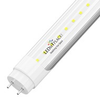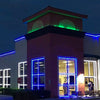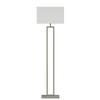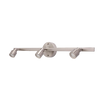Ever noticed the symbols like UL and Energy Star, which come with the light fixture or bulb? What do they mean? These product ratings inform the consumer that the product has met certain norms or procedures maintained by the power regulatory bodies.
These certifications also inform if the product is good to use in wet or dry locations. Let’s now understand the certificates associated with LED technology.
- UL (Underwriter Laboratories)
It’s a well-known listing and is used all around the globe. UL rating means that the product has been tested thoroughly and meets the necessary standards. They also determine safety standards maintained by the manufacturers. UL rating is provided to LED products that get pushed under the following given conditions.
Dry: These are areas where there is no direct contact with water. Brief exposure to moisture is an acceptable norm.
Damp: Indoor and outdoor locations that don’t directly contact water but are used to moisture condensation.
Wet: Indoors and outdoors where water may drip or splash, and the product can withstand to an optimum level.
- ETL (Electrical Testing Laboratories)
In 1896, Thomas Edison founded the lamp testing bureau for light bulb safety. It was later renamed ETL and is recognized by OSHA (Occupational Safety & Health Administration), and is currently operating as a division of Intertek Electrical Testing Labs. They test products on the standards published by other nationally recognized testing laboratories. It has more than 1000 laboratories worldwide.
- DLC (Design Light Consortium)
It’s a non-profitable organization and certifies products that have high-quality standards and energy-efficient in nature. They collaborate with manufacturers, program members, and industry members to promote high-end energy-efficient products.
The DLC certification is provided when the product confirms the following three criteria
- Distribution
- Color
- Longevity
In the United States, Rebate programs are based on DLC standards. DLC products include LED pole lights, wall packs, lamps, etc. These rebate programs vary from state to state.
- CE (Corformite Europene)
The letter CE appears on products traded on an extended single market of the European Economic Area (EEA). These products have to meet high standards of safety, health, and environmental safety. If you buy LED fixtures or components in Europe, look for the CE mark on the product.
These European countries have the power to ban products and fine them heavily due to non-compliances to European rules and regulations. There is also a similar logo where CE stands for Chinese Exports, and it means that the product was manufactured in China.
- CSA (Formerly Canadian Standards Association)
This regulatory body primarily serves the United States and Canada. These listing tests products based on American National Standards Institute (ANSI), UL, and National Science Foundation (NSF)
- Energy Star
It’s a government-backed certification to empower consumers to buy energy-efficient products. Energy Star has partnered with many industrial, commercial, utility, state, and local to help consumers identify energy-efficient products. It has also partnered with the US Environmental Protection Agency (EPA) to encourage eco-friendly lighting products among consumers.


















































































